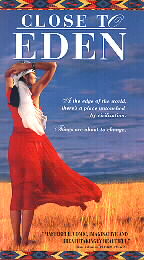 |
|
|
Bayar beside buildings
he rents out to
vacationing Chinese
toursists house on a
windswept plain in
China's Inner Monoglia
|
|
 |
|
|
Mongolian guest house
operator Bayar
|
BAIYUNKUANGQU, China (AFP) — For centuries, Mongols have grazed sheep, cattle and horses and hunted on the open steppe, camping in circular white tents known as yurts in a rugged, nomadic lifestyle that gave rise to the mobile cavalry of legendary conqueror Genghis Khan.
Bayar has spent most of his 48 years roaming the great Mongolian steppe in northern China, grazing his sheep flocks as his ethnic Mongol ancestors did for centuries.
But he was forced to settle down three years ago in a small brick house on a windswept plain here due to grazing restrictions which Mongols call the latest harsh blow to their age-old pastoral culture under Chinese rule.
"Those were great times. It was a good life," Bayar, who like most Mongols goes by one name, says of the old days while standing outside his home, a mere speck on the vast plains of China's Inner Mongolia.
"But these are the times we live in now."
The restrictions, first introduced a decade ago and now being stepped up, are aimed at protecting grasslands from desertification due to excessive farming, the overgrazing of expanding livestock herds and drought.
But those days are over for Bayar. He now ekes out a living renting out fake "yurts" to vacationing Chinese tourists eager to play nomad for a night.
The government "encouraged" this, he said, saying no more under the watchful eye of local officials who followed AFP reporters to his remote home in a sign of the issue's sensitivity.
In private, others are less guarded about the grazing restrictions.
"We were nomads, but that is being extinguished by this policy. This is a historic challenge for the Mongol people," said Batar, a 28-year-old sheep herder from near the city of Erdos.
Batar now must pen his herds three months of the year. Unable to afford feed for such a long period, he had to sell half his 300 sheep, taking a loss amid plunging mutton prices.
Critics say government compensation is inadequate or non-existent and allege that many of the "protected" lands were later taken over by Chinese mining and energy firms.
"Our space to exist in our own land is shrinking," Batar said.
According to China's forestry ministry, expanding deserts threaten up to 400 million people and recently were growing by nearly 3,500 square kilometres (1,400 square miles) a year to now cover a third of the country.
While China is widely accused of cultural repression in Tibet and its Muslim northwest, Mongols say their way of life also is being subsumed by Chinese culture and insensitive policies, as well as the impacts of climate change.
Inner Mongolia was once part of the great Mongol empire, but was split from the Mongolian heartland by later Chinese dynasties.
During the 1966-76 Cultural Revolution, Mongols were mercilessly attacked, accused of plotting to unite with the republic of Mongolia, then a client of the hated Soviet Union. Tens of thousands, perhaps more, were believed killed.
An influx of Han Chinese, China's majority ethnic group, has now left many towns and cities bearing hardly a trace of Mongol culture.
Even Genghis Khan's name unofficially remains taboo, Batar and other Mongols said.
Vast numbers of Mongol youths now have no interest in their own culture and are preoccupied with assimilating into Han society to survive, said author Lu Jiamin.
"This culture is basically disappearing," Lu said.
Lu, an ethnic Han, lived with Mongol herders during the Cultural Revolution, when Mao Zedong called on millions of Chinese to be sent to the countryside to "learn" from peasants.
His acclaimed book "Wolf Totem", written under a pseudonym, detailed the era's assault on a Mongol way of life he calls "ancient and valuable" -- an assault that he says continues today.
"The government is Chinese and they don't understand this culture, so how can they protect it?" he said.







